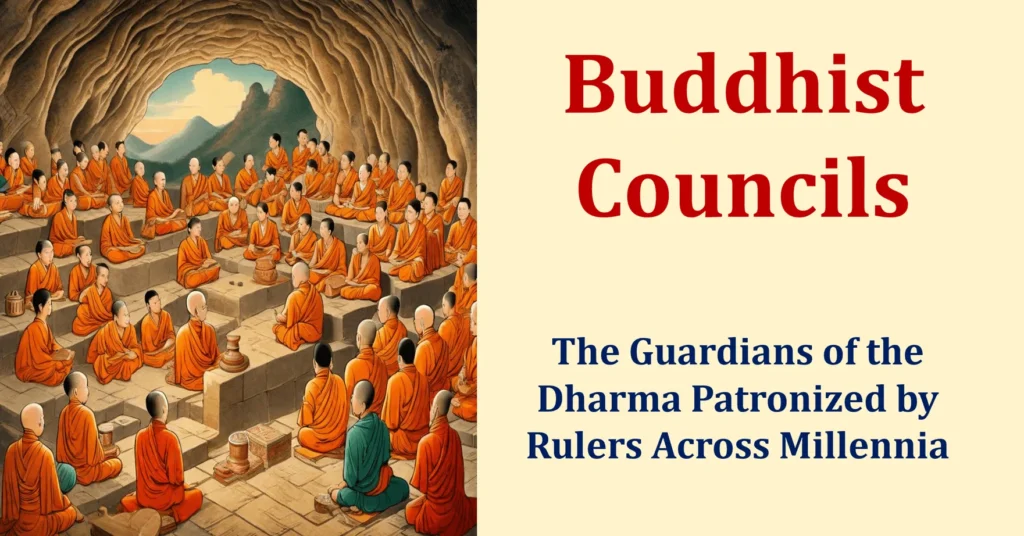
Introduction
Buddhism as one of the world’s major religions
Buddhism, founded by Siddhartha Gautama, commonly known as the Buddha, is one of the world’s major religions. Originating in ancient India around the 5th century BCE, Buddhism has spread across Asia and beyond, influencing cultures, philosophies, and societies. With its emphasis on the Four Noble Truths and the Eightfold Path, Buddhism offers a path to enlightenment and liberation from suffering.
Introduction to the Buddhist Councils
Buddhist Councils refer to gatherings of Buddhist monks and scholars convened to preserve, codify, and disseminate the teachings of the Buddha. These councils play a crucial role in the development and transmission of Buddhist doctrine, monastic discipline, and practices. They are pivotal events in the history of Buddhism, marking important milestones in its evolution.
Importance of Buddhist Councils
Buddhist Councils serve as pivotal moments in the preservation and propagation of Buddhist teachings. They ensure the authenticity and accuracy of the Buddha’s teachings by compiling and standardizing scriptures, clarifying doctrines, and resolving disputes within the monastic community. Additionally, they facilitate the transmission of Buddhism to new regions, contributing to its global spread and longevity.
Understanding Buddhist Councils
Definition and Purpose of Buddhist Councils
Buddhist Councils are assemblies of Buddhist monks and scholars convened to accomplish various objectives, including the preservation, propagation, and clarification of Buddhist teachings. These councils aim to compile and codify the Buddha’s discourses (sutras), monastic rules (vinaya), and philosophical tenets, thereby safeguarding the integrity of the Dharma.
Historical Context
The history of Buddhist Councils dates back to the time of the Buddha himself. The First Buddhist Council, convened shortly after the Buddha’s passing in 483 BCE., was held at Rajgriha (modern-day Rajgir) to recite and codify the Buddha’s teachings. Subsequent councils were convened to address doctrinal disputes, clarify teachings, and adapt Buddhism to changing circumstances and cultural contexts.
Significance of Buddhist Councils
Buddhist Councils hold immense significance in the history of Buddhism. They played a crucial role in preserving the oral teachings of the Buddha in written form, thereby preventing their loss or distortion over time. Moreover, councils served as platforms for monastic unity, fostering cooperation among different Buddhist communities and lineages. Additionally, they contributed to the dissemination of Buddhism beyond its place of origin, facilitating its spread to various regions of Asia and beyond.
First Buddhist Council
Background and Participants
The First Buddhist Council, also known as the Council of Rajgriha, took place shortly after the passing of the Buddha around 483 BCE. It was convened at Rajgriha, the capital of Magadha (modern-day Bihar, India) by the then ruler Ajatshatru who was a follower of Gautam Buddha. The primary purpose of the council was to compile and codify the teachings of the Buddha to prevent their loss or distortion.

The council was attended by 500 arhats (enlightened monks) who had achieved the highest level of spiritual realization during the Buddha’s lifetime. The most prominent figures among them were Mahakassapa, Ananda, Upali, and Aniruddha. Mahakassapa presided over the council, while Ananda, the Buddha’s close disciple, played a crucial role in reciting the teachings of the Buddha.
Compilation of Buddhist Scriptures
One of the central tasks of the First Buddhist Council was the compilation of the Buddha’s teachings into Pitaka or the “Baskets.” It comprises:
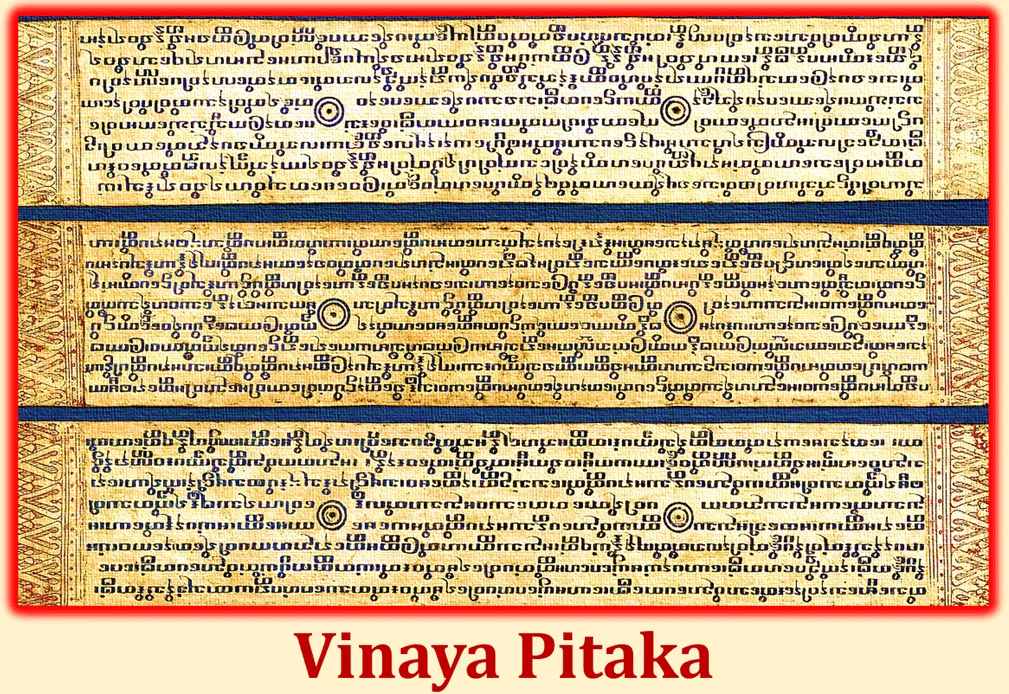
- Vinaya Pitaka: This section contains the rules and regulations governing the monastic community (Sangha). Upali, one of the chief disciples of the Buddha and an expert in Vinaya, recited the monastic code, which was meticulously recorded and organized during the council.
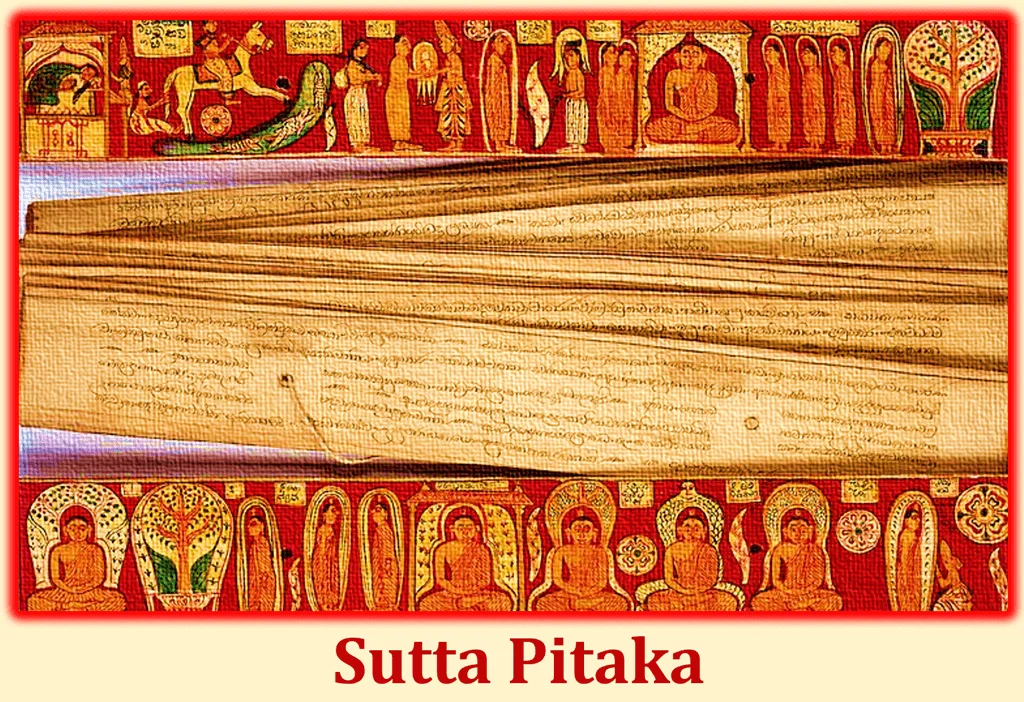
- Sutta Pitaka: The Sutta Pitaka consists of the discourses (suttas) delivered by the Buddha during his lifetime. Ananda, renowned for his exceptional memory, recited the discourses he had heard directly from the Buddha, while other senior monks corroborated and verified their authenticity.
The compilation of these scriptures ensured the preservation and transmission of the Buddha’s teachings in written form, safeguarding them against the impermanence of oral tradition.
Legacy and Impact
The First Buddhist Council had a profound and lasting impact on the development of Buddhism. By compiling the two Pitakas, the council established a canonical framework that became the authoritative basis for Buddhist doctrine and practice. It provided a standardized reference point for the monastic community, ensuring doctrinal coherence and consistency across different regions.
Moreover, the First Buddhist Council laid the foundation for the preservation and propagation of Buddhism beyond the lifetime of the Buddha. The scriptures compiled during the council served as the cornerstone of Buddhist education, meditation, and monastic training for centuries to come.
Additionally, the council established the tradition of holding Buddhist councils as a means of preserving and disseminating the Dharma. Subsequent councils, such as the Second and Third Buddhist Councils, followed in its footsteps, further shaping the course of Buddhist history.
In essence, the First Buddhist Council stands as a seminal event in the history of Buddhism, marking the beginning of a concerted effort to preserve and propagate the teachings of the Buddha for future generations.
Second Buddhist Council
Causes of Dispute
The Second Buddhist Council, also known as the Council of Vaishali was organized by the Ruler Kalasoka at Vaishali. It took place approximately a century after the First Buddhist Council, around 383 BCE. It was presided by a Buddhist monk named Sabakami. Unlike the harmonious gathering of the First Council, the Second Council was marked by discord and schism within the monastic community.
The primary cause of the dispute leading to the Second Council was a disagreement over certain monastic practices, particularly concerning the interpretation and application of the Vinaya (monastic code). A group of monks, led by a figure named Mahadeva, advocated for relaxing certain rules related to monastic conduct, arguing for a more lenient approach.
Opposing this viewpoint were the orthodox adherents, led by a respected elder named Yasa. They maintained strict adherence to the original Vinaya rules as established by the Buddha during his lifetime. The tension between these two factions ultimately led to the convening of the Second Buddhist Council to address the doctrinal dispute.
Outcome and Consequences
The Second Buddhist Council resulted in a formal schism within the Buddhist monastic community. Despite efforts to reconcile the opposing factions, consensus could not be reached, and the council concluded with a split between the orthodox (Sthaviravadins) and liberal (Mahasanghika) factions.
As a consequence of this schism, the Mahasanghika sect emerged as a distinct school of thought within Buddhism, advocating for more liberal interpretations of Buddhist teachings and monastic discipline. Meanwhile, the Sthaviravadins faction maintained a conservative stance, upholding the orthodox Vinaya and doctrinal interpretations.
The split between these two factions laid the groundwork for the subsequent proliferation of Buddhist schools and sects, each with its own distinct interpretations and practices. While the division was primarily doctrinal in nature, it also had significant implications for the organization and development of Buddhist communities across different regions.
Divergence in Buddhist Beliefs
The Second Buddhist Council marked the beginning of a broader divergence in Buddhist beliefs and practices. The Mahasanghika sect, influenced by the liberal tendencies advocated during the council, embraced new ideas and interpretations, leading to further doctrinal innovations and adaptations.
Conversely, the Sthaviravadins faction remained committed to preserving the original teachings of the Buddha as codified during the First Buddhist Council. They upheld a more conservative approach to Buddhist doctrine and monastic discipline, resisting doctrinal changes and innovations.
Over time, the split between these two factions contributed to the proliferation of diverse Buddhist schools and sects, each with its own unique interpretations of the Dharma. This divergence laid the foundation for the rich tapestry of Buddhist traditions that continue to exist today, reflecting the dynamic and evolving nature of Buddhist thought and practice.
Third Buddhist Council
Organization and Participants
The Third Buddhist Council, also known as the Council of Pataliputra, was convened during the reign of Emperor Ashoka around 250 BCE, approximately two centuries after the Second Buddhist Council. It was held in Pataliputra (modern-day Patna, India), the capital of the Maurya Empire.
The council was organized under the patronage of Emperor Ashoka, who played a crucial role in its establishment. The gathering was presided over by the venerable monk Moggaliputta Tissa from Sri Lanka. He was a highly esteemed figure in the Buddhist community known for his scholarship and spiritual attainments.
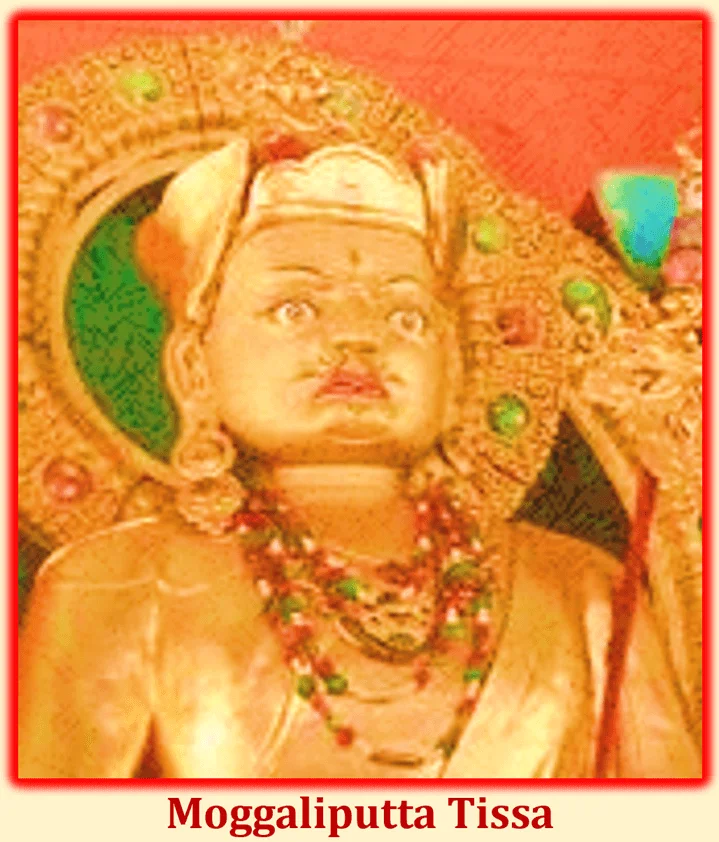
The participants of the Third Buddhist Council included eminent monks and scholars from various Buddhist communities across the Indian subcontinent. Their collective expertise and dedication to the Dharma ensured the success of the council’s deliberations.
Preservation of Buddhist Teachings
One of the primary objectives of the Third Buddhist Council was the preservation and propagation of Buddhist teachings in the face of perceived doctrinal deviations and schisms within the monastic community. The council sought to reaffirm the authenticity and purity of the Buddha’s teachings while addressing emerging challenges to doctrinal integrity.
To achieve this goal, the council undertook the monumental task of reviewing and revising the existing Buddhist scriptures, particularly the Sutta Pitaka and Vinaya Pitaka. Moggaliputta Tissa and other senior monks meticulously scrutinized the teachings, ensuring their alignment with the original doctrines as espoused by the Buddha. Moggaliputta Tissa gave philosophical interpretation to the teaching of Buddha.

Furthermore, the council compiled commentaries and sub-commentaries to elucidate the meaning and context of the scriptures, providing valuable insights for future generations of Buddhist scholars and practitioners. All these philosophical interpretation, commentaries and efforts resulted into the compilation of another text known as Abhidhamma Pitaka. This text combined with Sutta Pitaka and Vinaya Pitaka is called Tripitaka (Three baskets). Tripitaka in its revised and standardized form, safeguards the integrity of the Dharma for posterity.
Reconciliation of Sects
In addition to preserving the teachings of the Buddha, the Third Buddhist Council sought to reconcile the divergent sects and schools that had emerged since the Second Council. The council aimed to foster unity and harmony within the Buddhist community, transcending sectarian divisions and doctrinal disputes.
Under the guidance of Moggaliputta Tissa, the council facilitated dialogue and reconciliation among the various Buddhist factions. Efforts were made to bridge the differences between the orthodox (Sthaviravadins) and liberal (Mahasanghika) traditions, promoting mutual understanding and cooperation.
While complete unanimity may not have been achieved, the Third Buddhist Council succeeded in mitigating the tensions and divisions that had plagued the Buddhist community in the aftermath of the Second Council. Its emphasis on doctrinal clarity, ethical conduct, and communal harmony laid the foundation for a more unified and resilient Buddhist community, poised to withstand the challenges of the times.
Ashoka’s effort to Propagate Buddhism
Soon after the end of the third Buddhist council the great Mauryan Ruler Ashoka deputed large number of Buddhist monks to propagate this religion to various parts of the world. Infact, he went a step ahead and asked his son Mahendra and his daughter Sanghamitra to popularize Buddhism in Sri Lanka. Ashoka proved to be a great missionary ruler and even declared Buddhism as the state religion.
Fourth Buddhist Council
Evolution of Buddhist Practices
The Fourth Buddhist Council, held in the 72 AD at Kundalgram(Kashmir), represents a significant milestone in the evolution of Buddhist practices. Convened during the reign of King Kanishka, a powerful ruler of the Kushan Empire in ancient India, the council aimed to address emerging challenges and adaptations within the Buddhist tradition. One such challenge was the change in the mindset of a section of followers towards the Buddhist tradition.
Therefore, key focuses of the Fourth Council were the evolution of Buddhist practices in response to changing social, cultural, and philosophical landscapes. The council deliberated on various aspects of Buddhist doctrine and practice, including meditation techniques, ritual observances, and doctrinal interpretations. Under the leadership of the venerable monk Vasumitra, the council reviewed and systematized existing Buddhist scriptures, clarifying doctrinal ambiguities and codifying new interpretations.
Furthermore, the Fourth Council witnessed the refinement and standardization of meditation practices, with an emphasis on systematic training methods aimed at cultivating mindfulness, concentration, and insight. These developments laid the groundwork for the establishment of various Buddhist schools and lineages that specialized in particular meditation techniques and philosophical orientations.
Formal Split of Buddhism
The Fourth Buddhist Council also witnessed a formal split within the Buddhist community, leading to the emergence of distinct schools and sects. The council’s deliberations highlighted doctrinal disagreements, particularly regarding interpretations of key Buddhist concepts.
As a consequence, there was a formal split in Buddhism. The two divisions namely Mahayana and Hinayana. The Mahayana tradition, characterized by its emphasis on compassion and the ideal of the bodhisattva. It strongly advocated idol worship. Even Kanishka supported this tradition and promoted the Mathura and Gandhara School of Arts. It gained prominence and spread to Central Asia, China, and eventually East Asia.

Meanwhile, the Hinayana tradition, rooted in the early Buddhist scriptures and monastic discipline and were totally against idol worship. They flourished in Southeast Asia and Sri Lanka.
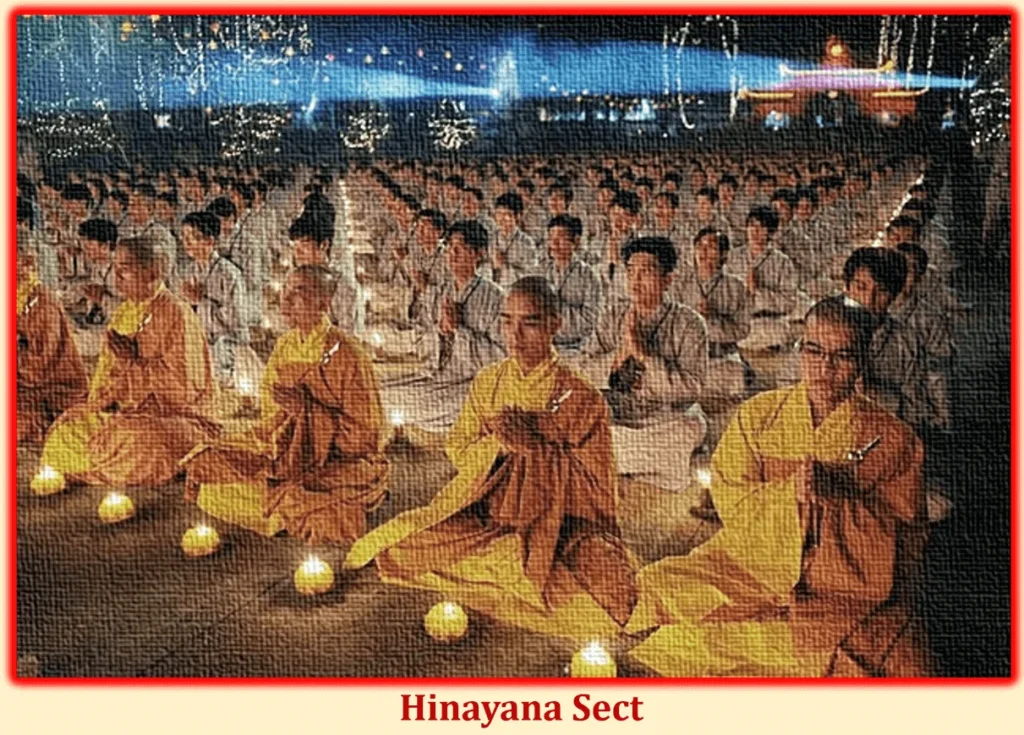
The Fourth Council’s formal split and the subsequent spread of Buddhism facilitated its diffusion across vast geographical territories. Buddhist missionaries and traders played a crucial role in disseminating the Dharma, adapting it to local cultures and customs along the way.
Spread of Buddhism
The Fourth Buddhist Council also played a significant role in the spread of Buddhism beyond the Indian subcontinent. During the reign of King Kanishka, Buddhism experienced a period of expansion and patronage, facilitated by the diplomatic and commercial networks of the Kushan Empire. The council served as a platform for the dissemination of Buddhist teachings to neighboring regions, including Central Asia, China, and Southeast Asia. Monks and scholars from diverse cultural backgrounds participated in the council, contributing to the cross-cultural exchange and translation of Buddhist texts into multiple languages. One such scholar and monk was Asvaghosa. He wrote a biography of Gautam Buddha titled “ Buddha Charita”. Asvaghosa provided a significant amount of support and assistant to Vasumitra who was presiding the council.
Moreover, the Fourth Council contributed to the establishment of Buddhist missionary efforts, with emissaries dispatched to distant lands to propagate the Dharma. As a result, Buddhism gained a foothold in new territories, adapting to local customs and beliefs while retaining its core teachings and principles. The spread of Buddhism beyond India during this period laid the foundation for the development of diverse Buddhist traditions and schools, each with its own unique cultural expressions and doctrinal emphases. The Fourth Council thus played a pivotal role in shaping the global diffusion of Buddhism and its subsequent influence on world history and culture.
Subsequent Buddhist Councils
Fifth Buddhist Council
The Fifth Buddhist Council is a significant event in the history of Buddhism, marking a continuation of the tradition of convening councils to preserve and propagate the Buddha’s teachings. This council took place in Mandalay, Myanmar (Burma), from 1871 to 1872 under the patronage of King Mindon Min of the Konbaung Dynasty.
The Fifth Buddhist Council was convened primarily to recite and reaffirm the Theravada Buddhist scriptures, particularly the Pali Canon (Tripitaka), in response to perceived threats of corruption and distortion. Over 2,400 monks from various Theravada Buddhist countries, including Burma, Sri Lanka, Thailand, and Cambodia, participated in the council.
Under the leadership of Venerable Jagarabhivamsa, the chief monastic authority appointed by King Mindon Min. He was assisted by Narindabhidhaja, and Sumangalasami. The Fifth Buddhist Council meticulously reviewed and recited the entire Tripitaka, including the Vinaya (monastic discipline), Sutta (discourses), and Abhidhamma (philosophical analysis). The scriptures were meticulously examined for accuracy and authenticity, ensuring their preservation for future generations.
Sixth Buddhist Council
The Sixth Buddhist Council represents another significant milestone in the history of Buddhism, particularly in the Theravada tradition. This council was convened in Rangoon (Yangon), Myanmar, from 1954 to 1956, under the auspices of the Burmese government led by Prime Minister U Nu.
The Sixth Buddhist Council was organized to commemorate the 2,500th anniversary of the Buddha’s Parinibbana (final passing) and to address perceived threats of doctrinal corruption and decline in Buddhist practice. The council was attended by over 2,500 Theravada Buddhist monks from various countries, including Myanmar, Sri Lanka, Thailand, Cambodia, and Laos.
Led by Venerable Mahasi Sayadaw and Venerable Bhadanta Vicittasarabhivamsa, the Sixth Buddhist Council like the other councils undertook the monumental task of reviewing, reciting, and redefining the Theravada Buddhist scriptures. The entire Pali Canon, including the Vinaya, Sutta, and Abhidhamma Pitakas, was meticulously examined and recited to ensure accuracy and authenticity.
In a remarkable tribute to the ancient sanctity of the first Buddhist council, artisans and devotees meticulously crafted a special Maha Passana Guha (cave), meticulously mirroring the sacred ambiance of its revered predecessor. This extraordinary cavern, reminiscent of the historic site where the Buddha’s teachings were first codified, emerged as a beacon of spiritual reverence and historical homage.
Conclusion & FAQs
Despite criticisms and controversies, Buddhist Councils hold immense significance in Buddhist history as pivotal events in the preservation, propagation, and interpretation of the Buddha’s teachings. These gatherings served as forums for consensus-building, doctrinal clarification, and community cohesion, shaping the development of Buddhist traditions over millennia.
The enduring legacy of Buddhist Councils continues to reverberate in the contemporary world, informing Buddhist scholarship, practice, and inter-sectarian dialogue. Their emphasis on textual preservation, doctrinal integrity, and communal harmony remains relevant in addressing contemporary challenges and controversies within the global Buddhist community.
As we reflect on the significance of Buddhist Councils, there is an invitation for further exploration and understanding of their multifaceted impact on Buddhism. By engaging with historical records, scholarly research, and diverse perspectives, individuals can deepen their appreciation for the complexities and nuances of Buddhist Councils and their enduring relevance in shaping Buddhist thought and practice.
Frequently Asked Questions (FAQs)
What is the purpose of Buddhist Councils?
Buddhist Councils were convened primarily to preserve and propagate the teachings of the Buddha, ensuring their authenticity and integrity. They aimed to review scriptures, clarify doctrinal disputes, and promote unity within the Buddhist community.
How many Buddhist Councils have been held, and where were they convened?
There have been several Buddhist Councils throughout history, with the most significant ones being the First, Second, Third, Fourth, Fifth, and Sixth Councils. These were held in locations such as Rajagriha, Vaishali, Pataliputra, Kundalgram, Mandalay, and Rangoon. The first four councils are considered as the most significant one where are the fifth and sixth failed to reach the regional boundaries.
How did Buddhist Councils impact the development of different Buddhist traditions?
The outcomes of Buddhist Councils contributed to the divergence of Buddhist schools and sects. While some councils aimed to promote unity, others resulted in schisms, leading to the formation of distinct traditions such as Theravada and Mahayana Buddhism.
What role did political factors play in the convening of Buddhist Councils?
Political patronage often played a significant role in the convening of Buddhist Councils. Rulers and kings supported councils to assert their authority, promote their preferred sects, or foster religious harmony within their realms.
How do Buddhist Councils remain relevant in the contemporary world?
Buddhist Councils continue to serve as a source of inspiration and guidance for modern Buddhists. They remind practitioners of the importance of upholding the Buddha’s teachings, fostering unity, and adapting to the challenges of the present era.
